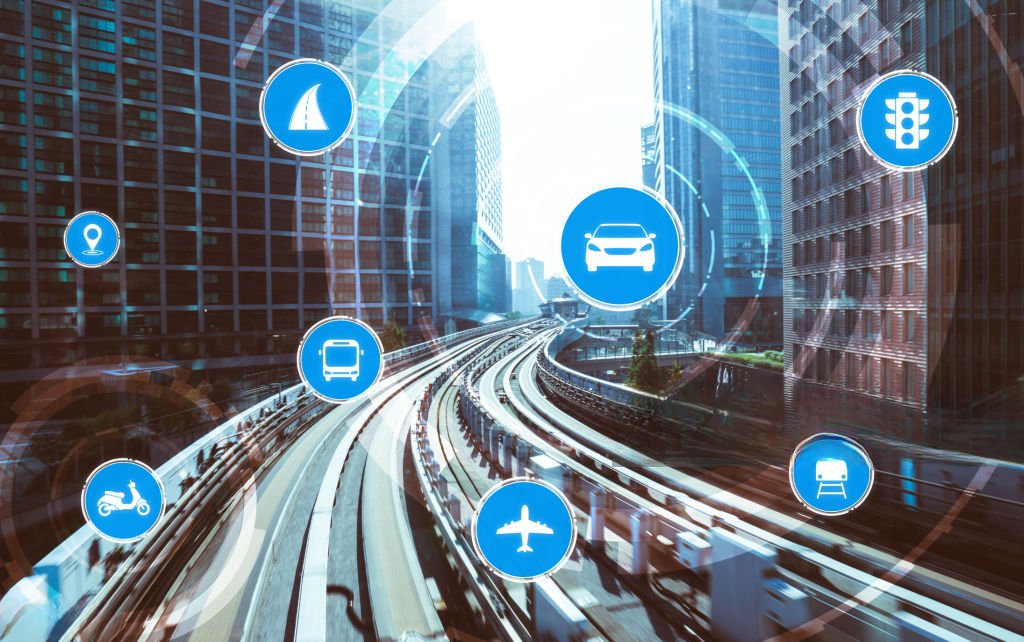
The Government’s Vision for AI-Driven Public Transport Solutions: Transforming Urban Mobility in India
- admin
- June 29, 2025
- Government, India
- 0 Comments
Exploring how the Indian government is leveraging artificial intelligence (AI) to enhance public transport systems, reduce congestion, improve efficiency, and create sustainable mobility solutions for future generations.
Key Highlights
- AI-Driven Traffic Management: Optimizing traffic flow using AI to reduce congestion.
- Smart Ticketing and Payment Systems: AI-powered systems for seamless travel experiences.
- AI for Fleet Management: Enhancing the operation of buses, trains, and metros.
- Government Initiatives: AI-based projects to enhance urban mobility in major cities.
1. AI-Driven Traffic Management: Reducing Congestion and Improving Urban Mobility
AI is transforming urban traffic management systems by providing real-time data analysis and predictive analytics. Through AI, traffic signals can be adjusted based on the flow of traffic, reducing congestion and improving the overall efficiency of road transport. The Indian government is increasingly incorporating AI into city traffic management solutions to address the challenges of growing urban populations and vehicular congestion.
AI in Action:
- Delhi (Population: 19 million): The Delhi Traffic Police has implemented AI-based traffic signal control systems that adjust the signal timings dynamically based on traffic volume. The AI system processes real-time data from over 500 traffic cameras across the city, helping reduce traffic delays by 15% and fuel consumption by 12%. The initiative has reduced travel time on congested routes by 20%.
- Bengaluru (Population: 13 million): Bengaluru has adopted AI-powered traffic management to enhance traffic flow during peak hours. AI tools predict traffic congestion based on historical data and real-time traffic inputs, helping police and transport authorities make informed decisions to minimize bottlenecks. This system has decreased peak-hour congestion by 18%.
2. Smart Ticketing and Payment Systems: Streamlining Public Transport
AI is enhancing the convenience and efficiency of public transport by offering smart ticketing and payment systems. These systems allow passengers to seamlessly access metro, bus, and train services through contactless payment methods, reducing long queues and improving operational efficiency.
Government Initiatives:
- Mumbai (Population: 12.5 million): Mumbai’s Mumbai Metro has introduced an AI-powered smart ticketing system that allows passengers to pay using digital wallets, QR codes, or mobile apps. The AI system helps optimize ticket pricing based on demand, reducing wait times and enhancing the commuter experience. Since its implementation, the system has improved passenger satisfaction by 30% and reduced ticketing operational costs by 20%.
- Kochi (Population: 2 million): The Kochi Water Metro Project incorporates AI in ticketing systems for seamless transfers between different modes of transport, including ferries, buses, and metro. AI-based payment solutions have reduced transaction time at stations by 40%, significantly improving the daily commute for over 100,000 passengers.
3. AI for Fleet Management: Enhancing Efficiency in Public Transport Operations
AI is revolutionizing the operation of public transport fleets, including buses, trains, and metro systems. AI-powered solutions improve scheduling, routing, and vehicle maintenance, ensuring that public transport systems are both efficient and reliable.
AI-Driven Fleet Management:
- Chennai (Population: 8 million): The Chennai Metro uses AI to predict train maintenance needs based on operational data. This predictive maintenance approach has helped reduce train downtime by 25%, improving service frequency and operational efficiency. AI-powered algorithms are also used to optimize metro routes and schedules based on passenger data, resulting in better service during peak hours.
- Hyderabad (Population: 7 million): The Hyderabad Metro uses AI to monitor bus fleet operations in real time. AI tools track vehicle conditions, predict maintenance schedules, and optimize bus routes based on commuter demand patterns. These AI-driven optimizations have reduced fuel consumption by 15% and increased route efficiency by 20%, benefiting over 300,000 daily passengers.
4. Government Initiatives: AI-Based Projects to Enhance Urban Mobility
The Indian government has set ambitious goals for integrating AI into public transport systems to create sustainable, efficient, and accessible mobility solutions. Several national initiatives are aimed at developing AI-driven infrastructure and technologies to support urban transport systems and improve the quality of life for citizens.
Key Government Programs:
- Smart Cities Mission: Under this initiative, the government is investing in AI-powered solutions for urban mobility. By 2025, the government plans to implement AI-based traffic management and public transport systems in over 100 cities. These systems will optimize public transport scheduling, reduce traffic congestion, and improve passenger experience across urban centers.
- FAME India (Faster Adoption and Manufacturing of Hybrid and Electric Vehicles): The FAME scheme includes AI technologies to optimize the use of electric vehicles (EVs) in public transport. AI-powered fleet management tools track EV usage and battery health, reducing operational costs and improving the environmental sustainability of public transport.
- National Urban Transport Policy: AI is integrated into the government’s vision for sustainable urban transport by helping optimize metro systems, buses, and trains to meet future demand while reducing the environmental impact of urban mobility. As part of this policy, the government aims to increase the share of public transport usage from 25% to 40% in major cities by 2030.
Challenges and Opportunities
Despite the tremendous potential of AI in transforming public transport, there are challenges such as infrastructure costs, digital divide, and the need for widespread digital literacy. Ensuring equitable access to AI-driven transport systems in rural and underserved areas remains a priority. However, with strategic investments in AI infrastructure, collaboration between the public and private sectors, and policy reforms, these barriers can be overcome.
Opportunities for Growth:
- Rural and Semi-Urban Areas: Expanding AI-based public transport solutions to smaller cities and rural areas can significantly improve mobility in these regions, ensuring that AI benefits are more widely distributed.
- AI-Driven Sustainability: AI-powered systems can help India move towards more sustainable urban mobility solutions, particularly through the integration of electric vehicles and smart traffic management systems, improving air quality and reducing carbon footprints.
Conclusion
AI is poised to revolutionize public transport in India, offering smarter, more efficient, and sustainable mobility solutions for millions of commuters. From optimizing traffic management and fleet operations to enhancing ticketing systems and predicting transport needs, AI is already making a significant impact on urban mobility. As the Indian government continues to invest in AI-driven projects, public transport systems across the country are set to become more responsive, accessible, and environmentally friendly, paving the way for a future where urban mobility is seamlessly integrated, smart, and sustainable.

